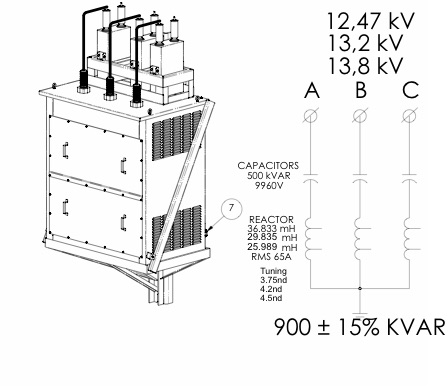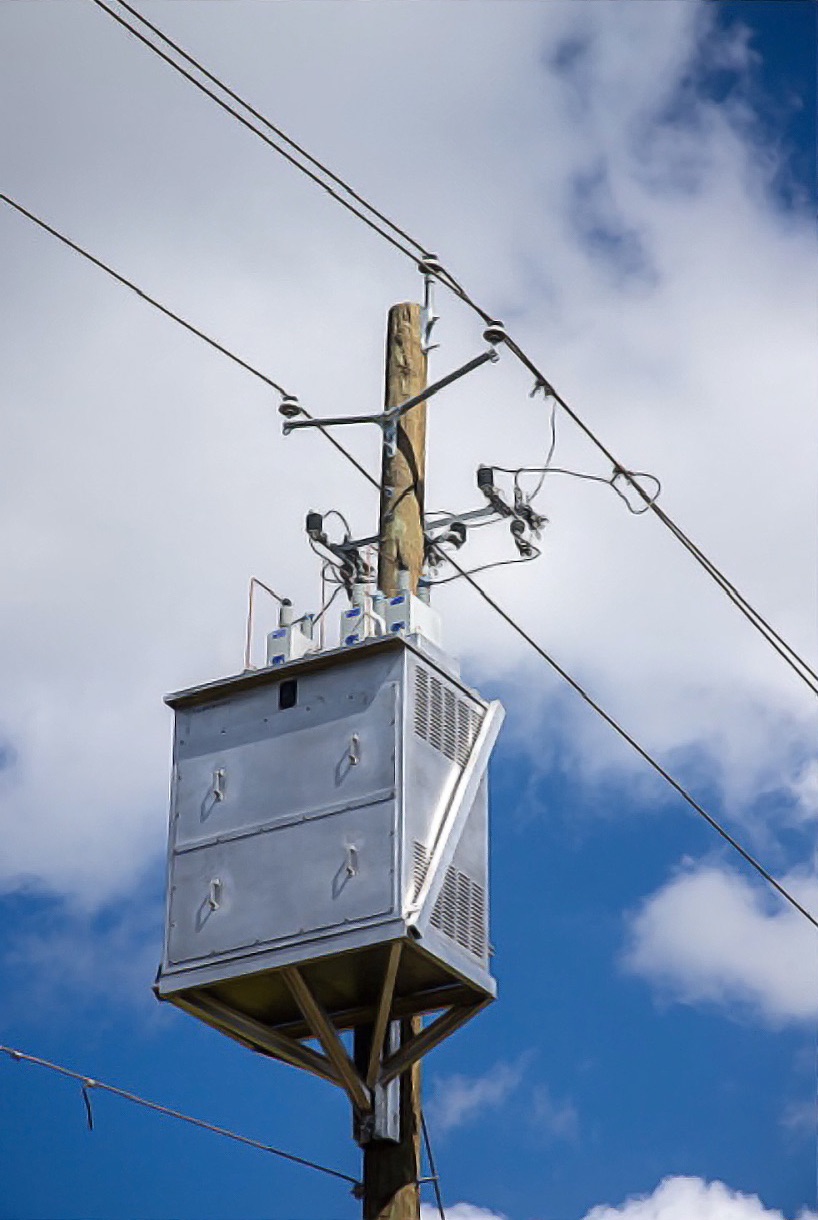
Electric utilities regularly experience power quality problems caused by client loads. Historically, when loads were mostly linear and highly inductive, any voltage or capacity problems associated with specific clients or feeder sections have been addressed by installing pole-or pad-mounted capacitor banks to supply reactive energy (VARs) to a distribution feeder system. This is a simple and efficient way to provide voltage support, capacity relief and help avoid power factor penalties.
However, with the proliferation of energy efficient but harmonic-producing non-linear loads — including variable frequency drives (VFDs), uninterruptible power supplies (UPSs) and switched mode power supplies (SMPSs)— deployment of capacitor-only banks can increase the risk of inducing resonance. This often leads to failure of the capacitor and/or other equipment, as well as a number of other voltage distortion issues.
Utilities could try to mitigate this concern by conducting a network analysis and simulation study. However, this is a complex task — often dependent on incomplete data and assumptions of future load conditions that may not happen. In other words, this may or may not be a futile endeavor.
A more practical approach is to deploy a future-proof filter capacitor bank that’s:
- designed specifically to prevent the occurrence of resonance conditions,
- while providing the reactive energy needed for voltage support, capacity relief, and to correct power factor.
This application note sheds light on an effective way to address these requirements via Pole-MVar, our innovative and economical pole-mounted tuned filter capacitor bank.
Powerside’s Pole-MVar Filter Capacitor Bank improves power factor and mitigates harmonics
Like a traditional capacitor bank, the filtered Pole-MVar bank injects reactive power to improve the power factor — but it also includes inductors that dampen harmonic currents and prevent the occurrence of resonance. Pole-MVar features a de-tuned filter with selectable frequencies from the 3.75th to 4.5th harmonic orders. This gives the utility a field-selectable option of either higher dampening of the 5th harmonic (using the 4.5th tap) or more resonance protection (albeit with less dampening of the 5th harmonic using the 3.75th tap.)
Because of its inductors, Pole-MVar is however heavier than capacitor-only banks with the same number of VARs. For this reason, it is designed with a separate lightweight mounting frame that is pre-installed on the pole prior to lifting the filter assembly into position.
Pole-MVar is available in various voltage classes (5-27 kV), with choices of tuning taps (3.75th, 4.2nd and 4.5th) and with fixed or automatic configurations (Figure 1).
Figure 1: Pole-MVar construction and topology, 15kV class, fixed configuration

Case study: How erratic UPS behavior led to the creation of Pole-MVar
After detecting resonance issues with their dual 900 kVAR pole-mounted capacitor banks installed at a customer facility running many non-linear loads (VFDs), a major utility reached out to Powerside to collaborate on the development of Pole-MVar, an innovative pole-mount filter capacitor bank.
Previously, the original capacitor banks had been specified for power factor correction without performing a network harmonic study. Consequently, at start-up, it was discovered that resonance was occurring at only the 5th harmonic. The voltage distortion and harmonic currents at the point of common coupling (PCC) substantially exceeded the levels permitted by IEEE-519 and caused the customer’s UPS systems to behave erratically.
Upon discovering the issue, the utility immediately took the second capacitor bank off-line, and reached out to Powerside to assist with designing a replacement 900 kVAR pole-mounted — but filtered — bank.
Based on the utility’s analysis, the combination of the first 900 kVAR capacitor bank and a new 900 kVAR filter bank would:
- prevent resonance
- lower harmonic currents and voltage distortion, and
- raise power factor above the penalty threshold of 90%.
The filter bank was installed and placed in service in July 2020. The bank reactors were tapped to the 4.5th harmonic with the aim of reducing the 5th and 7th harmonics. Table 1 shows the before and after performance of the installation — indicating substantial reductions in power factor and distortion without inciting resonance.
To summarize, power demand from the facility decreased by 15% and power factor went up to 92% — which relieved the network, eliminated the power factor penalty for the customer, and opened capacity for future growth. More importantly, it lowered the risk of induced resonance while also reducing current and voltage distortion.
Table 1: Utility measurements at the point of common coupling
| BEFORE with 900KVAR capacitor bank only | AFTER Pole-MVar 900KVAR filter+ 900KVAR capacitor bank | BENEFITS | |
|---|---|---|---|
| Power Demand (MVA) | 4.8 | 4.1 | 15% less power / 27% less heat |
| Power Factor (PF) | 85.0% | 92.1% | Penalty savings |
| Voltage distortion | 4.8% | 3.2% | No nuisance tripping or erratic operation |
| Current distortion | 9.8% | 5.5% | Higher long-term reliability |
| 5th harmonic current | 8.6% | 3.4% | Less nuisance tripping and erratic operation |
| 7th harmonic current | 3.0% | 2.2% | Less nuisance tripping and erratic operation |
| 11th harmonic current | 1.5% | 3.3% | Less nuisance tripping and erratic operation |
| 13th harmonic current | 0.9% | 1.7% | Less nuisance tripping and erratic operation |
Conclusion
As industries deploy more and more VFDs, UPS, electric vehicle chargers, LEDs and other harmonic-producing electronic loads, utilities can no longer safely assume that installing capacitor banks only near the client’s PCC can support voltage and relieve feeder networks without risk of inducing harmful resonance conditions.
Powerside’s Pole-MVar pole-mount filter banks offer numerous advantages to utilities and their customers:
- Mitigates harmonic currents, risk of resonance and voltage distortion
- Improves power factor to increase transformer and cabling capacity
- Avoids need for rights-of-way associated with pad-mounted banks
- Eliminates construction costs and delays (permitting, concrete pad, cabling, protection)
- Is more “community friendly” than ground installations, attracting less opposition

Consider Powerside your power quality partner
We’re here to help power utilities solve new challenges created by ever-increasing demands on the grid.
Contact Us
United States
980 Atlantic Ave
Alameda (CA) 94501
1-888-736-4347
Canada
7850 Trans-Canada Highway
Saint-Laurent (QC) H4T 1A5
1-877-333-8392